#indo Hellenic
Explore tagged Tumblr posts
Text
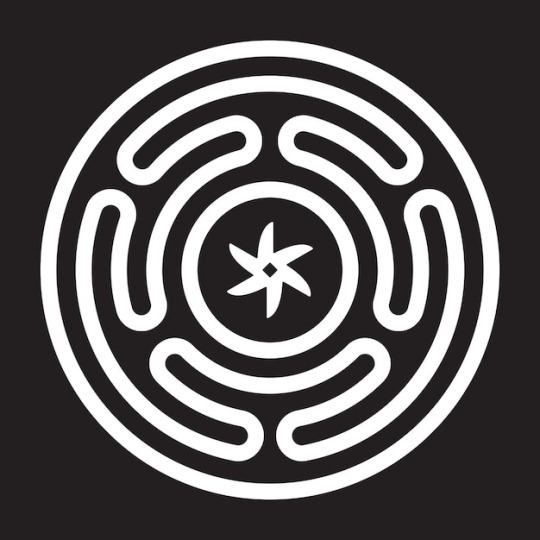
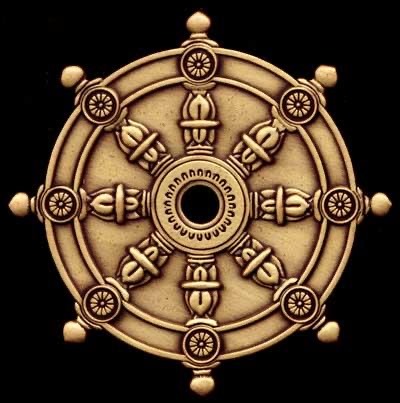
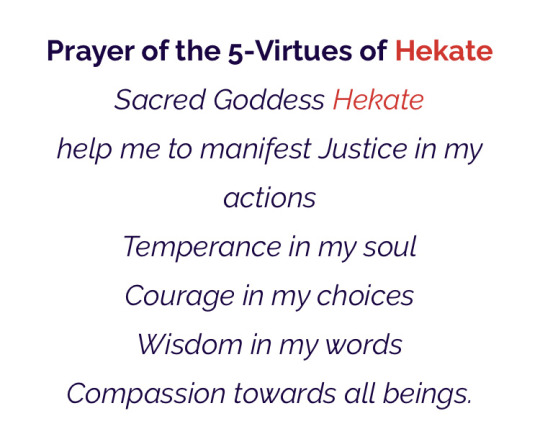
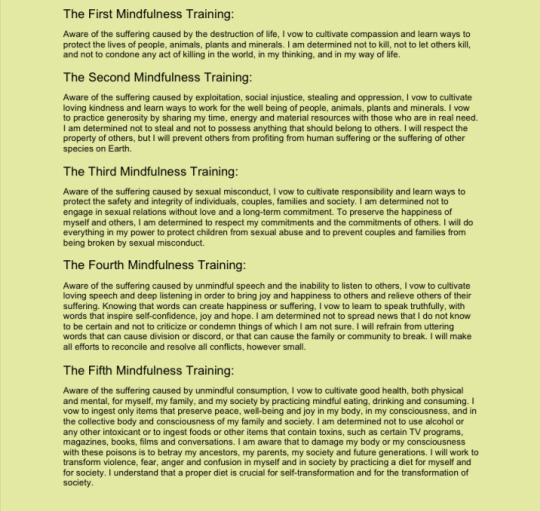
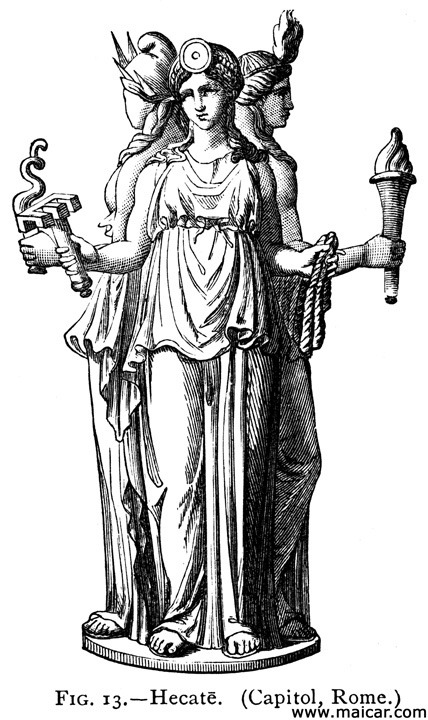
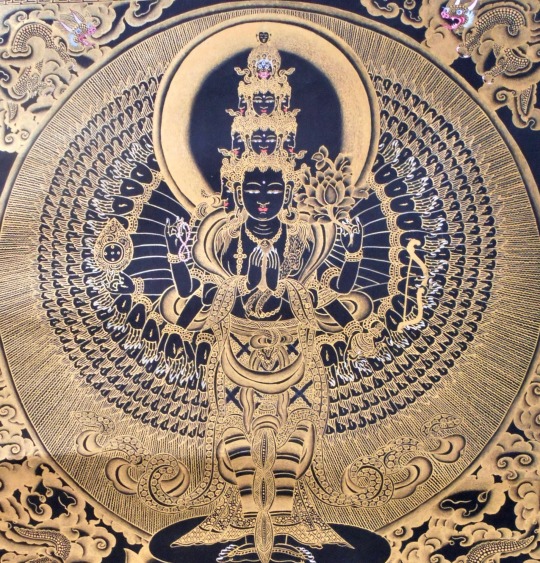
I’ve just been thinking a lot about cycles recently. As a devotee of Hekate and as a member of the Covenant of Hekate, I try my best every day to follow the 5 Virtues.
But today it just struck me how similar the 5 Virtues are to the 5 Mindfulness Trainings of Tibetan Zen Buddhist monk Thich Nhat Hanh.
I was first introduced to Thay when I was 16 and in the deepest depression of my life. His teachings on Zen Buddhism helped me so much, and I feel, led me to Hekate in my spiritual journey now in my 30’s.
The stropholos and the Wheel of Dharma just resonate to me in a complimentary way. And the Ancient Greeks did have a similar stance on reincarnation to Buddhism at least through a few mystery cults. I know that they are not perfectly parallel or syncretic, but I think the boddhisatva Avalokiteshvara and goddess Hekate are a good balance to each other.
We do know that there was cross-cultural blending through the representation of Greco-Buddhist art primarily in Gandhara (parts of modern day Pakistan and Afghanistan).
I was wondering if there are any others here who also follow an eclectic spiritual path?
13 notes
·
View notes
Text
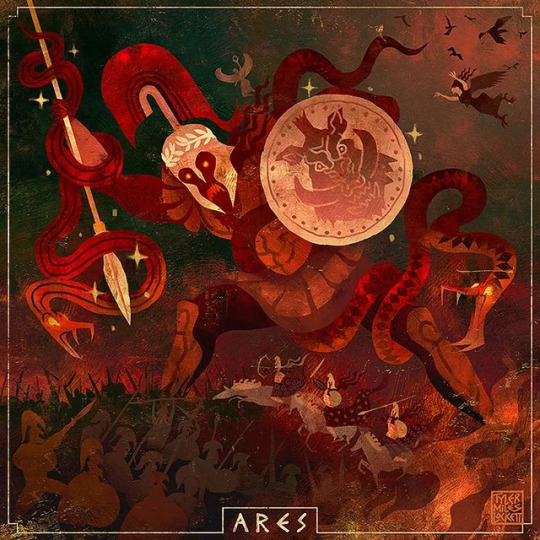
Ares/Thracian "Dionysos", A cognate of Rudlos?
This is one I will add for a more personal reason, but I think he has some connections. I'll explain but bare with me and acknowledge I consider more a UPG association than anything else. Perhaps someone here will find my shot in the dark interesting.
One of the twelve Olympians, son of Zeus, god of war, battlelust, courage and civil order. He is also associated Masculinity in general and modern Hellenists/Hellenic Polytheists often share the Personal Gnosis that he is a patron of mental health and one's struggle with it.
Now first, let me lay out a few facets of Ares I consider notable to this list. Although he is sometimes depicted as a mature, bearded man, especially after his syncretization with Mars, he is also often depicted as a spear-wielding(a common symbol to the cognates of Rudlos), nude, beardless youth, an ephebe. This brings to mind the connections between the ephebes and nude fighting, and the Koryos.
He was and is often shown diametrically opposed to Athena, Goddess of strategy, craftsmanship, and wisdom. Many misconstrue this as characterizing the "strategic and humane" warfare of Athena to the "savage and cruel" warfare of Ares. This could not be more wrong, as we have many stories of Athena encouraging, well, warcrimes, and Ares respecting another's honor.
The more accurate dichotomy is a much older, pan Indo-European one. One of defensive vs aggressive warfare. I have written earlier about the idea that Rudlos was the god of aggressive war, the marauding Koryos, counter-posed to the defensive Perkwunos, who protects the people and village from such raiders, and humanity at large from the demons of chaos, like Wṛ́tros. It is also widely accepted that Athena was formed from lesser, individual cults of palace goddesses, patrons of the individual homes of rulers, and later the cities they ruled, who later melded together into the panhellenic Athena, who likely takes her name from Athens and not the other way around as myth relates to us.
The crux of my theory is that rather than be actually being descended from the original PIE gods associated with these two forms of war, Ares and Athena sort of stepped into the molds they left behind, Ares particularly so.
The etymology of the name Ares is traditionally connected with the Greek word ἀρή (arē), the Ionic form of the Doric ἀρά (ara), "bane, ruin, curse, imprecation". Walter Burkert notes that "Ares is apparently an ancient abstract noun meaning throng of battle, war." Beekes has suggested a non-IE, Pre-Greek origin of the name. The earliest attested form of the name is the Mycenaean 𐀀𐀩, a-re.
The epithet, Areios ("warlike") was frequently appended to the names of other gods when they took on a warrior aspect or became involved in warfare: Zeus Areios, Athena Areia, even Aphrodite Areia ("Aphrodite within Ares" or "feminine Ares"), who was warlike, fully armored and armed, partnered with Athena in Sparta, and represented at Kythira's temple to Aphrodite Urania. In the Iliad, the word ares is used as a common noun synonymous with "battle."
He was also known by the name/epithet Enyalius. In Mycenaean times Ares and Enyalius were considered separate deities. Enyalius is often seen as the God of soldiers and warriors from Ares' cult. It has been suggested that the name of Enyalius ultimately represents an Anatolian loanword, although an alternative hypotheses treat it as an inherited Indo-European compound. The meaning is still unknown however.
Now, while it is indeed possible that Ares was a Pre-Greek(or perhaps even foreign) deity adopted by the Greeks, his character lines up closely with the IE idea of deified abstractions. The PIE's believed that if any idea exists, their must be a god who rules over it. In the absence of assigning it to a previously worshiped deity, they would deify the abstraction itself, this is the origin of the PIE god Xaryomen, Roman Fortuna, the various female night personifications throughout the IE world(Nyx, Nott, etc), among many others.
However there are two issues. First, his name is not IE in origin. It's seemingly a common noun, one widely adopted by IE people but still strange nonetheless. The second is his breadth of myth and variety of cultic practice, which is extremely strange for a supposed abstraction. For example, in parts of Anatolia, he had an oracular cult.
Consider his mythic origin for a moment. His birthplace was said to be Thrace, and he was believed by the Greeks to be the progenitor of their people. There is no well known obvious cognate of Ares is Thrace, so it is likely an association made by the Greeks because of the Thracian's martial skill and perceived warlike nature. However the cult of a Thracian god referred to as "Dionysus" was very widespread. Most believe him to be a separate deity. His connections to prophecy, poetry, war, and his identification with Apollon could indicate some connection to Rudlos, but his association with a solar cult feels potentially contradictory, at the very least could go either way because Apollonian influence and Rudlos-Dyeus identification in neighboring Anatolia.
Okay, enough rambling, let's get to personal, 100% UPG crackpot theory. When the IE Greeks encountered the Pre-Greek, Anatolian, and Minoan cultures, we know they adapted much of their culture and religion. Consequently, many IE deities were lost or altered beyond recognition. Rudlos's cult started to disappear before the Mycenaean age, and was then re-adopted/altered via Anatolian Apollon. During Rudlos's initial disintegration, most of his war-related aspects may have jumped ship and been given over to a newly formed/adopted deity, Ares/Enyalius. His aspect/son Leudhero may have influenced Dionysus in a similar manner.
To be clear, we will not considered Ares a cognate of Rudlos moving forward but I thought I would give you something I've been pondering while I continue to work on the next parts for the Rtkona series.
#paganism#deity worship#pagan#pagan revivalism#pie paganism#pie pantheon#pie polytheism#pie reconstructionism#pie religion#proto indo european paganism#hellenism#hellenic polytheism#hellenic deities#hellenic worship#helpol#ares#rudlos#reconstructionist paganism
26 notes
·
View notes
Text
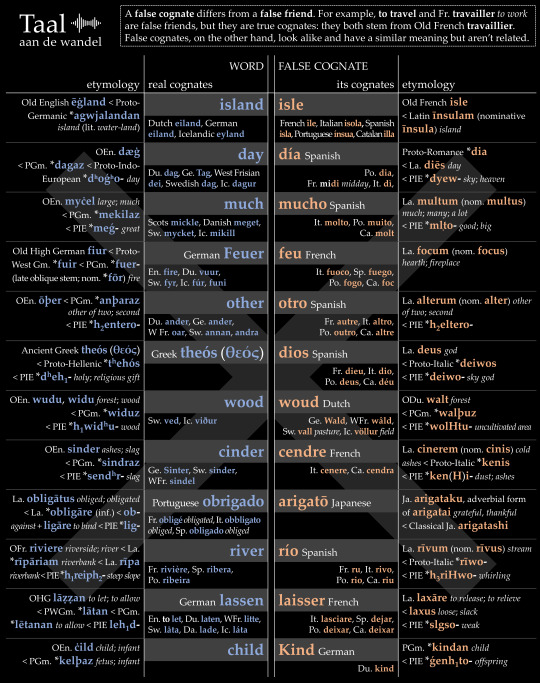
Just because two words look alike and have a similar meaning doesn't mean they're etymologically related. There has to be a common ancestor. For example, much looks like Spanish mucho, yet they stem from *mekilaz and multum respectively. Here are twelve pairs of false cognates.
#historical linguistics#linguistics#language#etymology#english#latin#french#dutch#german#spanish#proto-germanic#proto-indo-european#proto-hellenic#ancient greek#proto-italic#portuguese#catalan#japanese#frisian#swedish#danish#icelandic#scots#old high german#old french#old english#proto-romance#false cognates
202 notes
·
View notes
Text
Idk why but like the people working on Greek histling must read a lot of lesbian poetry (in both meanings of the word)
8 notes
·
View notes
Text
Thinking about the parallels between Hades' capture of Persephone and Zeus' capture of Ganymede. Thinking about how it serves as a microcosm for the Indo-European imagery of the sky as a father and earth as a mother. Thinking about how one is meant as a divine illustration for the customs surrounding arranged marriages and the other as a divine illustration for the customs surrounding male/male courtship
2 notes
·
View notes
Text
Proto-Indo-European Paganism?
I haven't really heard anyone else speak about this but are there any other pagans out there interested in the Proto-Indo-European pantheon? I'm fascinated with those gods and was curious if anyone else was also, or if anyone else has even heard of them.
#pagan#paganism#hellenic polytheism#norse paganism#norse polytheism#polytheist#PIE paganism#proto indo european#proto indo euopean polytheism
3 notes
·
View notes
Text
I saw this wonderful post, and decided to piggyback off of it to talk about an important and often understated aspect of Indo-European theology. It has been argued convincingly by actual academics(and Ceisiwr Serith if you don't want to drown in sesquipedalian nonsense. Also, you're welcome for giving you a new word to google) that the Proto-Indo-European religion(as we have reconstructed it, anyway) deified abstractions.
Put simply, they believed that the existence of a concept implied the existence of deity who ruled over it. Take jokes for an example. Jokes are not a material thing but they are a concept unique unto themselves and all people across all cultures recognize them in some form or another. Therefore, there must be a god of jokes. While I can think of some rather humorously characterized deities, I can not think a historically attested or reconstructed god of jokes worshiped by ancient peoples, but the existence means there is a being who governs/embodies them.
If a concept can not/is not rolled into a previously known/worshiped deity, and there is a perceived need to worship the being who embodies the concept, then a new cult centered around this deity is formed. This deified concept is often simply noun representing said concept as a name.
This system is perhaps most strongly represented by the Roman religion. The cults of Luna, Fortuna, and Salus, were all created in this way. The well reconstructed PIE deity Xaryomen is often thought to be this type of deity, representing IE society(or society at large today) as a whole, perhaps not all that unlike the many "National Gods" of the Ancient Middle East.
I've made a previous post about how I believe Ares is this type of god, wherein I suppose that the use of his name as a noun meaning 'war' may predate his cult entirely.
Ares’ name is often used in ways that make it clear that war is his realm, just as the sea is the realm of Poseidon, the underworld the realm of Hades, and the sky the realm of Zeus. In the Iliad, several characters refer to war as ‘the turmoil of Ares’. Nestor refers to a great clash of armies as a ‘deed of Ares’. The works of war are the works of Ares (Hom. Il. 11.732–36). The poet refers to war as ‘the strife of Ares’ (Hom. Il. 5.861; 14.149). It is at the hands of Ares that battles are endured (Hom. Il. 3.126–28), and it is by Ares that the combatants are slain: Nestor speaks of the many long-haired Achaians whose blood keen Ares has spilled around the river Skamander (Hom. Il. 7.328–30), while Priam tells both his household and Achilles that Ares has slain his many fine sons (Hom. Il. 24.253–62, 498).27 When the spears are flying, Ares guides their paths. The poet tells us how Ares causes spears to fall short from Meriones and Automedon (Hom. Il. 16.610–13, 17.525–29), just as he allows the spear to embed itself in the chest of Alkathous, robbing it of its momentum only once the man has been mortally wounded (Hom. Il. 13.443–44). In similar fashion, the sixth century poet Anakreon, as quoted in the Palatine Anthology, describes the battle-dead as being slain by Ares (Anth. Pal. 7.226 = Anac. fr.100D Diehl), as do the seventh-century Spartan poet Tyrtaios (Stob. Flor. 4.10. 6 = Tyrtaios fr.12 West) and a pair of Archaic inscribed epitaphs. To Anakreon, those who survive a battle do so because they have been spared by Ares (Anth. Pal. 7.160 = Anac. fr.100D Diehl). Ares was unique amongst all the gods of the ancient Aegean in being a god whose name was used as a metonym for war. While divine warriors, patrons of warriors, protectors in battle, and bringers of destruction could be found throughout the Near East, only Ares was identified directly with war. The Classical Attic tragedians inherited the idea that Ares was both synonymous with war as its anthropomorphic personification and also its divine ruler, responsible for all deaths in battle and for the survival of all those who walked away. In this, Ares filled a distinct niche, more specific than Zeus and Fate, who ruled over all walks of life, and less partisan than the many warrior-protectors who stalked each battlefield. Stories about and cults for Ares therefore enabled the Greeks to engage with the idea of war as an independent force with a distinctive character. - Alexander T. Millington, Worshipping Violence, in Brill's Companion to Greek Land Warfare Beyond the Phalanx
#deity worship#pagan#paganism#pagan revivalism#pie paganism#pie pantheon#pie polytheism#pie reconstructionism#pie religion#proto indo european paganism#hellenic polytheism#hellenic worship#hellenic pagan#hellenism#hellenic deities
98 notes
·
View notes
Text
⚡︎ Zeus ⚡︎
˚ ✦ . . ˚ . . ✦ ˚ . ★⋆.

Most info gathered by theoi.com, study.com, and google, or by Zeus himself with pendulum (The Devotional Part I asked Lord Zeus about)
˚ ✦ . . ˚ . . ✦ ˚ . ★⋆.
⚡︎⚡︎⚡︎ :Etymology: ⚡︎⚡︎⚡︎
Greek Name: Ζευς Transliteration: Zeus
Latin Spelling: Zeus Translation: Jupiter, Jove
Study.com result: His name, which means "sky father," was derived from the Proto-Indo-European word that means "to shine." In ancient Greek culture, Zeus and his name were the personification of the sky. Zeus's name was originally used to describe his powers.
⚡︎⚡︎⚡︎ :Relationships: ⚡︎⚡︎⚡︎
Main Spouse: Hera, Goddess of Marriage, Women, Family, Fertility, and Childbirth
Affairs: Metis, Themis, Eurynome, Demeter, Mnemosyne, Leto, Dione, Persephone, Asteria, Aphrodite
Siblings: Poseidon, Hades, Hera, Hestia, Demeter
Parents: Rhea and Cronus/Kronos
Most Known Children: Aphrodite, Apollo, Artemis, Ares, Athena, Dionysus, Hermes, Persephone, Pan
Least Known Children: Agdistis, Aegipan, Aletheia/Alatheia, Asopus, Atë, Britomartis, Dike, Eileithyia, Eirene, Eris, Ersa, Eunomia, Harmonia, Hebe, Hephaestus, Horai/Horae, Kabeiroi/Cabeiri, Kairos/Caerus, Kentauroi Kyrpioi (Cyprian Centaurs), Charites, Korybantes Samothrakioi (Samothracian Corybantes), Litae, Melinoë, Moirae, The Nine Muses, Nemea, Nymphs, Themeides, Palici, Pandeia, Phasis, Zagreus
Mortal Children: Aeacus, Aethlius, Acheilus, Alexander the Great, Amphion, Argus, Arcas, Arceisius, Atymnius, Dardanus, Dioscuri, Emathion, Endymion, Epaphus, Graecus, Helen, Hellen, Heracles, Herophile, Iarbas, Iasion, Ceroessa, Colaxes, Corinthus, Crinacus, Cronius, Cytus, Lacedaemon, Latinus, Magnes, Makedon, Manes, Megaros, Meliteus, Minos, Myrmidon, Orion, Pelasgus, Pirithous, Polydeuces, Rhadamanthys, Saon, Sarpedon, Spartaios, Tantalos, Targitaus, Tityos, Zethos
⚡︎⚡︎⚡︎ :Sacred: ⚡︎⚡︎⚡︎
Animals: Eagles, Bulls, Swans, Goats, Cuckoos, Wolves, Snakes
Items: Thunderbolt, Royal Sceptre
Plants: Oak Tree, Olive Tree
⚡︎⚡︎⚡︎ :Devotional Info: ⚡︎⚡︎⚡︎
Major Arcana: Justice, The Magician, The Emperor, Strength, The Sun, Judgement
Tarot Suits: King of Swords
Color Associations: Gold, Yellow, Blue, Black, White, Orange
Days: Thursday
Seasons: Stormy Seasons & Sunny Seasons (Mid Winter and Summer)
Consumables: Ambrosia, Nectar, Wine
Modern Consumables: Literally Anything
#zeus#lord zeus#king zeus#paganism#witchcraft#hellenic pagan#hellenic worship#hellenic paganism#hellenic polytheism#hellenic polytheistic#hellenic deities#hellenic polythiest#deity work#pagan deity work#pagan deities#witch#wicca#pagan wicca#pagan witch#witchblr#wiccablr#paganblr#eclectic pagan#eclectic witch#hellenic community#hellenism#greek mythology#myth#greek myth
95 notes
·
View notes
Text
Hellenism is the pinnacle of ‘Paganism’—the force that built empires, carved laws into stone, and sculpted marble into eternity. It was never just worship; it was dominion—of reason, war, and divine excellence. A faith of builders, warriors, and rulers—men who did not submit to fate but seized power through their will.
No other Indo-European tradition rivals Hellenism in written legacy, philosophy, or civilisational might. From Homer to Plato, from Alexander to Rome, its chain remains unbroken—not myth, but divine order made manifest. Hellenism was never a religion of submission, but of mastery—over self, nature, and fate. The Gods were not distant but forces to be understood, engaged, and embodied. Hellenic philosophers did not worship blindly; they dissected, contemplated, and elevated the divine to its highest form—the Olympian flame burned in the mind as much as in the temple.
For Europa’s ancestral Gods to reign again, Hellenism must lead. The Norse, Celts, and Slavs have their place, but without Hellenism as the Grand Architect, Europa’s sacred traditions remain scattered, passive, without a throne. This is not about competing factions—it is about reclaiming dominion.
If Hellenism rises, all rise. The path forward is not division, but unity under the aegis of Hellenism—the only force with the vision, strength, and wisdom to restore what was lost.
#pagan wicca#hellenic community#hellenism#paganblr#hellenic polytheism#hellenic pagan#paganism#pagan#pagan witch#hellenic gods#greek history#hellenic worship#pagan community#pagans of tumblr#pagan stuff#pagan blog#witch#witchcore#witch art#witches of tumblr#witchcraft#witches#witch community#witchy#witch world#witchy lifestyle#witchy woman#witchy art#queen of witches#witchblr
38 notes
·
View notes
Text
Mycenaean Greek
(and examples of lexical evolution to Modern Greek)
Mycenaean Greek is the most ancient attested form of the Greek language (16th to 12th centuries BC). The language is preserved in inscriptions of Linear B, a script first attested on Crete before the 14th century BC. The tablets long remained undeciphered and many languages were suggested for them until Michael Ventris, building on the extensive work of Alice Kober, deciphered the script in 1952. This turn of events has made Greek officially the oldest recorded living language in the world.
What does this mean though? Does it mean that a Modern Greek could speak to a resurrected Mycenaean Greek and have an effortless chat? Well obviously not. But we are talking about the linear evolution of one single language (with its dialects) throughout time that was associated with one ethnic group, without any parallel development of other related languages falling in the same lingual branch whatsoever.
Are we sure it was Greek though? At this point, yes, we are. Linguists have found in Mycenaean Greek a lot of the expected drops and innovations that individualised the Hellenic branch from the mother Proto-Indo-European language (PIE). In other words, it falls right between PIE and Archaic Greek and resembles what Proto-Greek is speculated to have been like. According to Wikipedia, Mycenaean Greek had already undergone all the sound changes particular to the Greek language.
Why was it so hard to decipher Linear B and understand it was just very early Greek? Can an average Greek speaker now read Linear B? No. An average Greek speaker cannot read Linear B unless they take into account and train themselves on certain rules and peculiarities that even took specialized linguists ages to realise and get used to. Here's the catch: Linear B was a script inspired by the Minoan Linear A, both of which were found in the Minoan speaking Crete. (Minoan Linear A inscriptions have yet to be deciphered and we know nothing about them.) The Mycenaeans (or was it initially the Minoans???) made only minimal modifications to produce the Linear B script and used it exclusively for practical purposes, namely for accounting lists and inventories. Linear B however was an ideographic and syllabic script that stemmed from a script that originally was not designed to render the Mycenaean Greek language, and thus it could not do it perfectly. In other words, the script itself does not render the Greek words accurately which is what made it extremely hard even for the linguists to decipher these inscriptions. Due to its limited use for utility and not for prose, poetry or any other form of expression, the Mycenaean Greeks likely did not feel compelled to modify the script heavily into some more appropriate, accurate form to cover the language's needs.
Examples of the script's limitations:
I won't mention them all but just to give you an idea that will help you then read the words more easily:
In the syllabic script Linear B, all syllable symbols starting with a consonant obligatorily have a vowel following - they are all open sylllables without exception. Linear B can NOT render two consonants in a row which is a huge handicap because Greek absolutely has consonants occuring in a row. So, in many cases below, you will see that the vowel in the script is actually fake, it did not exist in the actual language, and I might use a strikethrough to help you out with this.
For the same reason, when there are consonants together, at least one of them is often casually skipped in Linear B!
There were no separate symbols for ρ (r) and λ (l). As a result, all r and l sounds are rendered with the r symbol.
Exactly because many Greek words end in σ, ς (sigma), ν (ni), ρ (rho) but in Linear B consonants must absolutely be followed by a vowel, a lot of time the last letter of the words is skipped in the script!
Voiced, voiceless and aspirate consonants all use the same symbols, for example we will see that ka, ha, gha, ga all are written as "ka". Pa, va, fa (pha), all are written as "pa". Te, the are written as "te".
There are numerous other limitations but also elements featured that were later dropped from the Greek language, i.e the semivowels, j, w, the digamma, the labialized velar consonants [ɡʷ, kʷ, kʷʰ], written ⟨q⟩, which are sometimes successfully represented with Linear B. However, that's too advanced for this post. I only gave some very basic, easy guidelines to help you imagine in your mind what the word probably sounded like and how it relates to later stages of Greek, and modern as is the case here. That's why I am also using simpler examples and more preserved vocabulary and no words which include a lot of these early elements which were later dropped or whose decoding is still unclear.
Mycenaean Linear B to Modern Greek vocabulary examples:
a-ke-ro = άγγελος (ágelos, angel. Notice how the ke symbol is representing ge, ro representing lo and the missing ending letter. So keep this in mind and make the needed modifications in your mind with the following examples. Also, angel actually means "messenger", "announcer". In the Christian context, it means "messenger from God", like angels are believed to be. So, that's why it exists in Mycenaean Greek and not because Greeks invented Christianity 15 centuries before Jesus was born XD )
a-ki-ri-ja = άγρια (ághria, wild, plural neuter. Note the strikethrough for the nonexistent vowel)
a-ko-ro = αγρός (aghrós, field)
a-ko-so-ne = άξονες (áksones, axes)
a-na-mo-to = ανάρμοστοι (anármostoi, inappropriate, plural masculine. Note the skipped consonants in the script)
a-ne-mo = ανέμων (anémon, of the winds)
a-ne-ta = άνετα (áneta, comfortable, plural neuter, an 100% here, well done Linear B!)
a-po-te-ra = αμφότερες (amphóteres, or amphóterae in more Archaic Greek, both, plural feminine)
a-pu = από (apó, from)
a-re-ka-sa-da-ra = Αλεξάνδρα (Alexandra)
de-de-me-no = (δε)δεμένο (ðeðeméno, tied, neuter, the double de- is considered too old school, archaic now)
do-ra = δώρα (ðóra, gifts)
do-ro-me-u = δρομεύς (ðroméfs, dromeús in more Archaic Greek, runner)
do-se = δώσει (ðósei, to give, third person singular, subjunctive)
e-ko-me-no = ερχόμενος (erkhómenos, coming, masculine)
e-mi-to = έμμισθο (émmistho, salaried, neuter)
e-ne-ka = ένεκα (éneka, an 100%, thanks to, thanks for)
e-re-mo = έρημος (érimos, could be pronounced éremos in more Archaic Greek, desert)
e-re-u-te-ro-se = ελευθέρωσε (elefthérose, liberated/freed, simple past, third person)
e-ru-to-ro = ερυθρός (erythrós, red, masculine)
e-u-ko-me-no = ευχόμενος (efkhómenos or eukhómenos in more Archaic Greek, wishing, masculine)
qe = και (ke, and)
qi-si-pe-e = ξίφη (xíphi, swords)
i-je-re-ja = ιέρεια (iéreia, priestess)
ka-ko-de-ta = χαλκόδετα (και όχι κακόδετα!) (khalkóðeta, bound with bronze, plural neuter)
ke-ka-u-me-no = κεκαυμένος (kekafménos, kekauménos in more Archaic Greek, burnt, masculine)
ke-ra-me-u = κεραμεύς (keraméfs, kerameús in more Archaic Greek, potter)
ki-to = χιτών (khitón, chiton)
ko-ri-to = Κόρινθος (kórinthos, Corinth)
ku-mi-no = κύμινο (kýmino, cumin)
ku-pa-ri-se-ja = κυπαρίσσια (kyparíssia, cypress trees)
ku-ru-so = χρυσός (khrysós, gold)
ma-te-re = μητέρα (mitéra, mother)
me-ri = μέλι (méli, honey)
me-ta = μετά (metá, after / post)
o-ri-ko = ολίγος (olíghos, little amount, masculine)
pa-ma-ko = φάρμακο (phármako, medicine)
pa-te = πάντες (pántes, everybody / all)
pe-di-ra = πέδιλα (péðila, sandals)
pe-ko-to = πλεκτό (plektó, woven, neuter)
pe-ru-si-ni-wo = περυσινό / περσινό (perysinó or persinó, last year's, neuter)
po-me-ne = ποιμένες (poiménes, shepherds)
po-ro-te-u = Πρωτεύς (Proteus)
po-ru-po-de = πολύποδες (polýpoðes, multi-legged, plural)
ra-pte = ράπτες (ráptes, tailors)
ri-me-ne = λιμένες (liménes, ports)
ta-ta-mo = σταθμός (stathmós, station)
te-o-do-ra = Θεοδώρα (Theodora)
to-ra-ke = θώρακες (thórakes, breastplates)
u-po = υπό (ypó, under)
wi-de = είδε (íðe, saw, simple past, third person singular)
By the way it's killing me that I expected the first words to be decoded in an early civilisation would be stuff like sun, moon, animal, water but we got shit like inappropriate, salaried and station XD
Sources:
gistor.gr
Greek language | Wikipedia
Mycenaean Greek | Wikipedia
Linear B | Wikipedia
John Angelopoulos


Image source
#greece#history#languages#linguistics#greek#greek language#langblr#mycenaean greek#modern greek#greek culture#language stuff#vocabulary#linear b#mycenaean civilization
143 notes
·
View notes
Text
Interesting. I would say that animism is the natural religious impulse, and that what we call paganism is much closer to that than modern monotheism. It seems to me that the Abrahamic religions, while descended from polytheism, seek to deny or destroy that natural religious impulse, for reasons that have more to do with the rise of hierarchical state structures than any philosophical or "theological" superiority.
“Paganism is the natural religious impulse manifesting naturally in human beings.”
- Thomas Rowsell
#animism#paganism#asatru#wicca#norse polytheism#hellenic polytheism#hellenic polythiest#polytheist#celtic polytheism#kemetic polytheism#greek polytheism#hinduism#shinto#hebrew polytheism#indo european#abrahamic religions#comparative religion#religion#atheism
20 notes
·
View notes
Text
Paxuson Part 1: Introduction and Comparison of Cognates
A god of bidirectionality, of liminanlity, paths, doorways, travelers, wealth, shepherds, animals, and fertility. His name means "protector" and his direct linguistic cognates are Pan and Pushan.

Pan, Lord of the Wilds
Pan is the god of the wild, shepherds and flocks, rustic music and impromptus, and companion of the nymphs. He is also recognized as the god of fields, groves, wooded glens, and often affiliated with sex; because of this, Pan is connected to fertility and the season of spring. His origin and source of worship was in Arcadia, an isolated mountainous region of the Peloponnese whose culture is . It is believed that Hermes was originally an epithet of Pan who split off early on and becomes a separate deity associated with boundaries, roads, travelers, merchants, thieves, athletes, shepherds, commerce, cunning, and messages.
Both Hermes and Pan have myths putting in them in relation to Apollon. Hermes is characterized as being nurtured by Apollon who acts as a sort of patron to the young god. Pan and Apollon had a famed music competition in the myth of Midas. Given that we have established Apollon as a cognate of Rudlos, lets keep this in mind.

Pushan by OverlySarcasticProductions
Pushan, The Far-Roaming Shepherd
God of meetings, marriages, journeys, roads, fertility, sheep, and cattle. He is called to stir sexual desire in the bride on her wedding day. He is often seen as a solar deity, although this is connected to his shepherd aspect pretty explicitly.
He was a psychopomp, conducting souls to the other world. He protects travelers from bandits and wild beasts, and protects men from being exploited by other men. He is a supportive guide, a "good" god, leading his adherents towards rich pastures and wealth. His chariot is pulled by goats.
While there are multiple versions of the tale, it is commonly said that Rudra knocks out Pushan's teeth at the Daksha yajna, although he doesn't seem to be the target of his rage.

Cernunnos, The Horned Lord
Cernunnos, A Gaulic deity, whose name is probably more accurately rendered as *Karnonos, meaning "Horned Lord". Through the Pillar of the Boatmen, the name "Cernunnos" has been used to identify the members of an iconographic cluster, consisting of depictions of an antlered god (often aged and with crossed legs) associated with torcs, ram-horned (or ram-headed) serpents, symbols of fertility, and wild beasts (especially deer).
Ceisiwr Serith has an excellent dissection of symbols and character in his Youtube video essay, Cernunnos: Looking Every Which Way. Cernunnos has been variously interpreted as a god of fertility, of the underworld, wealth and trade, and of bi-directionality. Cernunnos has been tentatively linked with Conall Cernach, a hero of medieval Irish mythology, and some later depictions of cross-legged and horned figures in medieval art.

Kurunta, The Deer Hunter
His name seems to be cognate with Hittite Kurunta. His sacred animal is the stag, although this was not exclusive to him. He is commonly depicted standing on a stag, and Hittite texts identify the god standing on the stag as the god of the countryside. In Yazilikaya, a tutelary god of nature (likely Kurunta as the god is accompanied by the antler sign) is depicted with only a crook. There are also parallels with Kurunta following behind a storm god, as seen in a sea of Mursili III and a relief from Aleppo. There are also depictions of Kurunta holding a bow and arrows, which outside of due to him being a tutelary god also connects him to hunting. The hunting aspect was also emphasized by Tudhaliya IV.

Pashupati, Shiva of the Animals
Over in India, particularly in the east, another cognate of Rudlos, The mighty Rudra, is widely known by his epithet and avatar, Pashupati, who may be related to Paxuson. The name means "Lord of the Animals". While he may be related to the pre-Indo-Aryan deity depicted on the eponymous Pashupati seal of the Indus Valley Civilization discovered in modern day Pakistan, I believe he may be a reflex, or at least influenced by, the PIE deity in question.
In the Atharvaveda, the fourth Veda and one of the later additions to Vedic literature, Rudra is described to be the lord of the bipeds and the quadrupeds, including creatures that inhabited the earth, woods, the waters, and the skies. His lordship over cattle and other beasts denoted both a benevolent and destructive role; he slew animals that incurred his wrath, but was also kind to those who propitiated him, blessing them with health and prosperity. He is also seen a tutelary deity, of the nation of Nepal in particular.
#deity worship#pagan#pagan revivalism#paganism#pie paganism#pie pantheon#pie polytheism#pie reconstructionism#pie religion#proto indo european paganism#hellenic worship#hellenic deities#hellenic polytheism#hellenic pagan#hellenic polythiest#hellenism#hellenic paganism#hellenic devotion#celtic paganism#celtic polytheism#celtic deities#celtic gods#gaulish paganism#gaulish polytheism
22 notes
·
View notes
Text
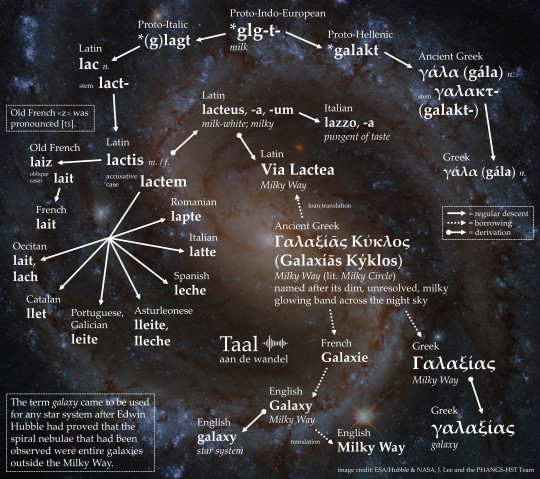
The words galaxy and latte are etymologically related. Galaxy stems from Ancient Greek Galaxíās (Milky Way), from gála (milk), which has the same ancestor as Italian latte (milk). The Milky Way was named after its milky glowing band in the night sky. Click the image for a further explanation.
#historical linguistics#linguistics#language#etymology#english#latin#french#spanish#ancient greek#greek#proto-hellenic#proto-italic#proto-indo-european#old french#occitan#catalan#portuguese#galician#asturleonese#romanian#lingblr#space#astronomy#galaxy
336 notes
·
View notes
Note
Hello what are the devotionals acts you do for the divinities you devoted yourself to ?
Cheers
Hii! Thank you for your question! Okay, so currently I can't do a lot for health related reasons. So mostly it's things related to surviving and healing, as I'm dealing with cancer, chemotherapy and the aftereffects of a bad mental health crisis. 🌼 I used to do a lot of other things while I was doing better, but in this context I also I need to point out that I grew up with the cultural and religious heritage of Judaism, Romani and a number of Indo-European practices, because I live here and my family has diverse roots (although that's not uncommon in Euroasia). It's things like festivities and customs, that are practiced locally or have been passed down within the family, which involve such acts. All that is very traditional and often very different for people who start working with deities or become member of these cultural practices and religions from the outside or a different background, as belief is always a very individual matter. Since some of my family's cultural and religious roots have been lost or buried, especially due to WW2 and it's aftermath, assimilation, relocation and simply generational loss of interest, I have also made big efforts since my childhood to learn about it and reconstruct. In other words, the way I practice is a mixed bag of different approaches. 🌈 And I do recommend to always try a bit to pave your own path in regards to how you want to practice. Of course it's also fine to draw inspiration from different sources. Actually that's a pretty good way to go about it in my opinion, as diversity keeps our communities and believes alive, evolving and growing and therefore seasonable and healthy! 🥰 If you want to participate or set up more traditional festive acts like the ones I mentioned above for yourself, I recommend researching the calendars of the cultures and religions you're interested in. Similar to the "default" Christianity, all other religions and cultures have annually repetitive practices that are worth looking into. You can also leave a comment with the religions you're curious about and I can see if I can find something to at least get you started on your research journey with some pages or terms to look into, if you want to go down that particular path. 🌼 (No pressure though, I understand that's not for everyone!) But ofc there's also rather personal devotional acts. 🙈 I'm a bit shy to share about this, but I'll take Hellenism as an example: In dedication the Hecate, I practice shadow work, rituals and ancestral work as my family does. In dedication to Apollo, I practice art, have spent my life doing dedicated work to learn about herbal and alternative medicine, picked up training and work as a nurse ages ago (I had to stop since) and I make many playlists, used to sing etc in devotion to him. My dream is to get and learn to play the lyre as a devotional act. In dedication to Ares, I have spent a long time working with him to be able to tap into my anger and deal with it in healthy ways, instead of dissociating it, learning and creating healthy boundaries etc. I made a post about my make-shift altar, where I address some of these things and just how personal and individual they can be, further below here:
Again, this is deeply personal, involves topics of my own personal history etc and also requires a bit of a trigger warning here and there.
I think devotional acts can either be traditional things, that happen in accordance with festivities etc. Or acts that are commonly associated with a deity's attributes (e.g. Aphrodite = love, self love etc; Apollo = healing, art, muses etc). Or things that match with these deities in accordance to your very core personality and current life situation. Or (and most importantly): Simple daily life things. 🌌 In my opinion it's an important part of the spiritual work and a devotional act in itself, to find out what works for you personally, to go on a journey to connect with your deities and believes and figure out what they mean to you, for what reasons you worship and what your hopes and your dedication to a belief or deity is made of. It's also a lot of fun and helps a ton with personal growth though, so don't feel scared or like this is a huge thing. It starts with small stuff, such as writing a poem, making a playlist and a lot of it stays small like this, always. It's also important to only do what's within your power and never go beyond that point, simply to please. Don't try to do things that you can't or that are too much or damaging. It will rob you of your joy in worship and burn you out, rather than give you the desired spiritual peace and connection. The big challenges and changes in life come around all by themselves & when you need a God the most and have to do the difficult things that help you progress? These are the big things you can dedicate to them & do with their help and guidance as well. 💕🌼 Sorry for the long text, I tried to cover a bunch of areas of information and I hope there's something in here that helps you!
#hellenism#paganism#the chthonic originals#jack's writing stuff#apollo paian#apollo worship#apollo#apollo deity#apollo devotee#helpol#hellenic worship#hellenic polytheism#healing#mental health#chronic illness#tagamemnon#thoughts#philosophy#ancient history#history#hecate#ares#ask#thoughts on worship#this is not a rule or guide#it's simply how i do things for me#your worship is okay the way it feels okay to you#we don't restrict or judge in this house#equality#judgement free zone
25 notes
·
View notes
Text
c'mon guys i just got this new OCULAR SYMBIOTE that allows me to absorb full pages of information at NEAR-INSTANT SPEEDS. i need an excuse to use it
Ask ME any Wizard Question in my Arcane Inbox and I will uncover for you an Answer from my Vast Stores of Literature
#wizardposting#come to think of it im not sure if it said SYMBIOTE or PARASITE. my ancient indo-hellenic pseudolatin is a bit rusty#im sure it's fine
6 notes
·
View notes
Text
Day 4 of Hellenic Polytheism
Are there any deities you don’t currently worship but want to learn about? by @wisdom-devotee
I have realized I know basically nothing about Poseidon. I don't have any inclination to worship him but I was shocked with how little I knew. I had no clue how connected to horses he was or how "old" he possibly is, nor his connections to Desponia or Peloponenese. [Disclaimer: I have not read all the sources]
Met Museum:
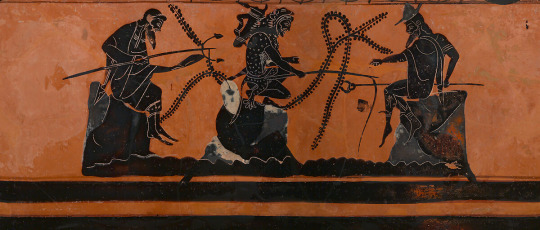
Poseidon, Herakles, and Hermes fishing. The immortals of Mount Olympos were not exclusively engaged in momentous feats. Here three of them are shown fishing, each perched on a rock. Poseidon holds his catch in one hand, his trident in the other; Herakles tries his luck with a rod; and Hermes gesticulates at the right." Terracotta lekythos (oil flask) ca. 515 BCE Greek, Attic. Met Museum — Link
Encyclopedia of Ancient History: Poseidon by Ioannis Mylonopoulos — Link
Theoi Project Poseidon — Link
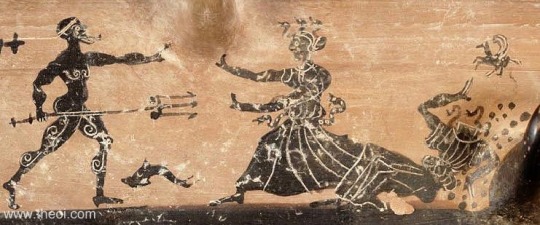
Boeotian Black Figure. Bowl, Three-Handled. ca 5th Century BCE. The Gorgon Medusa lies dead, beheaded by the hero Perseus. On the left, the god Poseidon strides forward with a trident in one hand and a dolphin at his feet. One of the Gorgons rushes towards him with arms outstretched. She is crowned with a pair of serpents and wears two snakes tied as a girdle about the waist. Behind her, Medusa lies dead with blood squirting from the severed stump of her neck. The winged, horse Pegasus flies just above her, born in the gout of blood. — Link
The Indo-European Attribute of Poseidon as the Water God by Nobuo Komita — Link (Link to Google Scholar and PDF is a download)
Abstract: Generally Poseidon is regarded as the Greek sea god; however, besides his maritime attribute, he seems to have closely associated with fresh water. As the myth of Amymone indicates, Poseidon produced springs which formed the Lerna River; in addition, Amymone is concerned with water as the river and springs of her name imply. And as the myth of the Alban Lake suggests, Neptunus, the Roman equivalent of Poseidon, is also closely associated with fresh water. The etymology of Neptunus is interpreted as 'Nephew of Water'. The etymology of Poseidon also indicates that Poseidon seems to be concerned with warer; the *da-component of Poseidon is explained as proto-1-E 'fowing water'. In eastern and central Europe, major river names such as the Don, the Dnieper, the Doniester, and the Donau have the * da- component. These features imply that the etymology of Poseidon can be interpreted as 'Husband of Waters' indicating Poseidon as a fertility god, and similarly his seismic attribute is related with water (earth water'). The Indo-European sky god Zeus is also associated with water sending the rain to fertilize the earth, which indicates that Zeus and Poseidon share the same role as a fertility spirit. Originally Poseidon was the Indo-European water god associated with fertility, and Poseidon seems to have acquired his maritime aspect in Greece. However, his etymology and various features concerning water designate that Poseidon firmly retained his original Indo-European attribute. (sorry if this is wonky copy/paste was weird)
Pu-ro, pa-ki-ja-na/-ne, and the Sanctuary of Poseidon at Pylos By Barbara Montecchi — Link
From Article: the hypothesis is put forward that the temple of Poseidon (po-si-da-i-jo), which is linked to both pu-ro and pa-ki-ja-ne (PY Tn 316), should be identified with the central megaron of the Palace, the religious role of which is well known. Poseidon indeed appears as the most prominent god of the Pylos kingdom
Continuity From the Mycenaean Period in a Historical Boeotiam Cult of Poseidon (And Erinys) by Thomas Palaima — Link
From Article: ...in the full range of Mycenaean culture and its place within the Hellenic tradition, past and present. He has also been interested in detailing the archaeological evidence for what leading researchers call 'the horse of Poseidon', i.e., the terrible earthquake damage that might have contributed to the demise of Mycenaean palatial culture. I offer this exploration into continuity of an unusual cult of Poseidon in Boeotia from the Bronze Age into the classical period
Mythical and ritual landscapes of Poseidon Hippios in Arcadia by Julie Baleriaux — Link
Abstract: Poseidon has recently benefited from renewed scholarly attention, contributing to re-evaluate his role in ancient Greek imaginary. By opening the research previously limited to literary evidence to the archaeological and topographical evidence, new perspectives on “Poseidonian landscapes” have emerged. Arcadia, a land-locked region where Poseidon Hippios is celebrated with fervour, is here taken as a case study to try and go further in identifying the god’s realm of action. Areas with floods seem to be his preferred worship places, while in other areas he plays a crucial part in myths but is hardly worshipped alone. There also seems to be a connection between his patronage over freshwater and horses. Overall, natural observation seems to have been instrumental in choosing the location of his worship places.
From Polis to Borders: Demarcation of Social and Ritual Space in the Sanctuary of Poseidon at Kalaureia, Greece by Pakkanen Petra — Link
Abstract: This article focuses on three interrelated themes in the study of ancient Greek religion, looked at through the material evidence from the sanctuary of Poseidon at Kalaureia on the island of Poros, Greece. First, I look at the so-called polis model and its applicability to an interpretation of Kalaureian material related to the cultic life of the sanctuary from the point of view of the 'historiography' of Greek religion. I then discuss the historical context of the archaeological material, with particular emphasis on the topic of the sanctuary as a known place of asylum particularly during the Hellenistic period. Thirdly, I examine the archaeological material related to eating and dining and its potential connection to the demarcation between sacred and profane activities and between sacralised and profane space in the sanctuary, with special interpretative attention to the significance of border(s) and boundaries. Drawing attention to these issues may help us understand the dynamics and interplay between 'official' and 'private' aspects of ancient Greek religion, within both the tradition of the scholarship of ancient Greek religion and the so-called 'archaeology of cult'.
Further Insights on the Cult of Poseidon Helikonios in Helike (IV)* by Dora Katsonopoulou — Link , PDF
From Article:
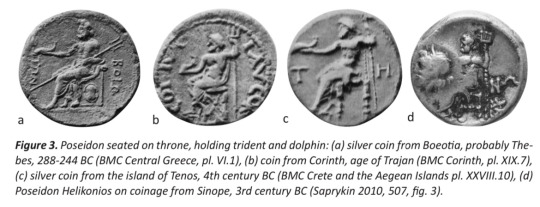
The cult statue in Poseidon's temple probably showed the god seated, holding trident in one hand and dolphin (fish) in the other. This type of Poseidon enthroned is represented on coinage of a number of cities associated with his worship (Fig. 3a-c); more interestingly, a similar depiction of the god, even identified as Helikonios, is preserved on early 3rd century BC coins from Sinope, where he was strongly worshipped. On the reverse of these coins, Poseidon is shown seated on throne to left, holding dolphin in his right hand and leaning with his left hand on trident; on the countermark of the coin illustrated, a diademed radiant head of a god (Zeus or Poseidon) to the left is depicted (Fig. 3d).
Reflections on the gems depicting the contest of Athena and Poseidon by Hadrien Rambach — Link
From Article:
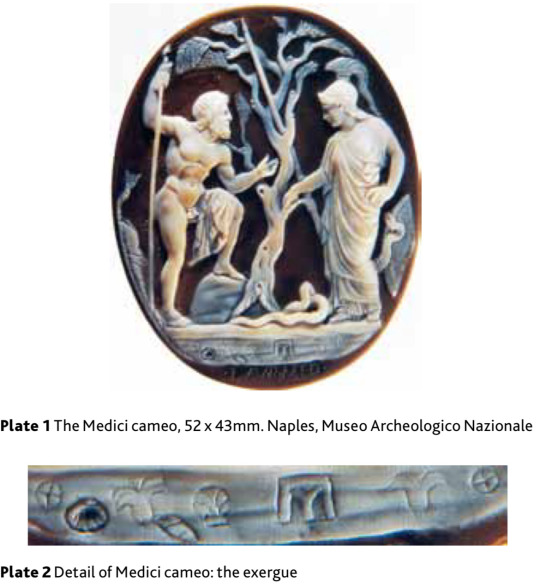
This article examines the depiction on engraved gems - with essential detours to marble sculpture and numismatics - of the "dispute of Athena and Poseidon", or rather the presentation of the gifts, with the gods facing each other. The most famous is a cameo in Naples (plate 1), [...] engraved gems, this large cameo measures over 50mm in height. Believed to date from the late 1st century BCE. [...] Part of the attraction - and mystery - of the cameo is the unexplained series of engravings in the exergue: two palm trees, two shells, two wheels (?), the IY monogram, and another, unidentified object (plate 2)
The Sanctuary of Poseidon at Onchestos from Onchestos Excavation Project — Link
From website: Sanctuary of Poseidon at Onchestos has left its mark in the literary works of the ancient Greek civilization as a longstanding religious and political hub in Boeotia. From the 1960s on, sporadic archaeological investigations at the site provided tantalizing glimpses at the extent of the sanctuary and its influence over the region.
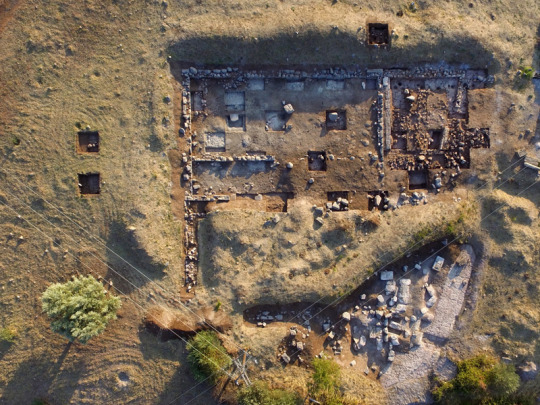
Site A of Sanctuary
Louvre Museum:

Fragment. Poseidon (remains, standing, headband, chiton, himation, holding, trident); framing net. Late Corinthian 6th Century BCE ca. 550-525 BCE . — Link
Paywalled: Poseidon's Festival at the Winter Solstice by Noel Robertson — Link
#polytheism#paganism#helpol#hellenic polytheism#poseidon#poseidon deity#ofthetheoi#31 days of helpol#large resource#Out of all the Greek Gods I've researched he is significantly more difficult than the others for academic/reputable sources#feel free to add#had to private and unpriavte this because it posed before i finished#y'all the amount of tabs my browserS have open right now
14 notes
·
View notes